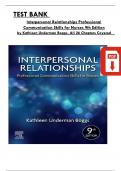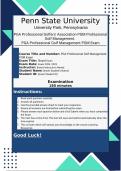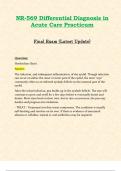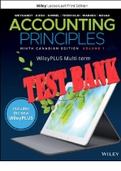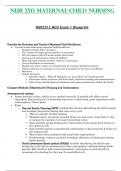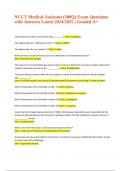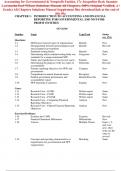Tentamen (uitwerkingen)
Test Bank For Success in Practical Vocational Nursing From Student to Leader 10th Edition By Knecht Patricia | 9780323810173 | | Chapter 1-19 | All Chapters with Answers and Rationals
- Vak
- Instelling
- Boek
Elevate your practical vocational nursing journey with the Test Bank for Success in Practical Vocational Nursing: From Student to Leader, 10th Edition by Patricia Knecht. Access instant, printable PDFs with authentic content directly from the publisher. Covering all 19 chapters, this resource provi...
[Meer zien]





